In early 2018 I bought a lot of 5 cameras for £5, including postage. The camera I bought it for was the Canon Megazoom 105 (who could resist such a name). Sadly this didn’t work; the lens gets stuck halfway out. One day I might have a go at fixing it, but getting into that plastic shell without destroying it is not an appealing prospect.
What of the other cameras in the lot? Two are instamatic cameras that take 127 film. Again, I might have a go with these one day, but 127 film is pricey and these have no controls but a shutter. Another camera in the lot is similarly limited, a “focus-free” plastic box. I used this for a couple of rolls, including some shots I really liked from our honeymoon. I gave it to a toddler, promising to develop anything that came out of it. I’ve not heard any more about it…
The last camera of the lot is a Ricoh point and shoot, rebadged for Boots, a UK pharmacy chain. I had no high hopes for it, but two years later I forked over the money for a battery. With the battery in, the lens popped out in its full, wheezy, grindy, 90s glory. I’ve been used to shooting completely manually for a while now; on film with a Kiev 4 in 35 mm, and an Ikonta-M in 120. Even shooting digital I choose my exposure manually and use manual focus lenses. What would it be like using this auto-everything, zoomtastic monster?
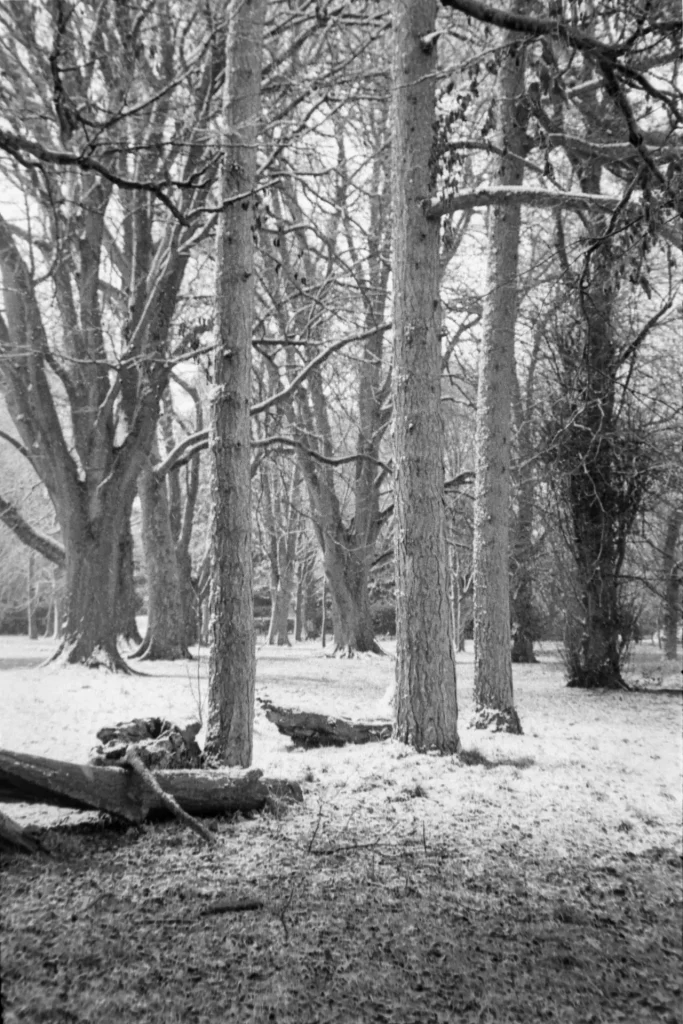
Quite fun, actually. Maybe too much fun, as over three short walks in the snow, I had finished a 36 frame roll of HP5+. The process of zooming somewhere within the 38-80 mm range of the lens, composing, then just pressing a button, was perhaps too easy. The results were better than I was expecting. I had given the auto capabilities quite a challenge by shooting during snowfall, which is why, I suspect, it missed focus a couple of times by focusing on falling snow.
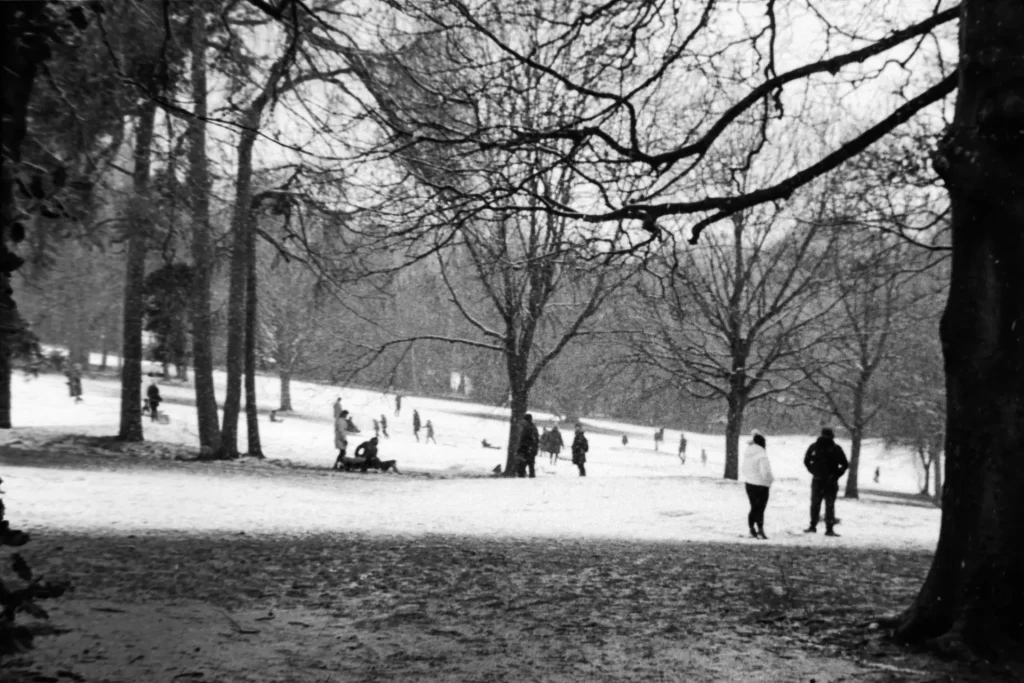
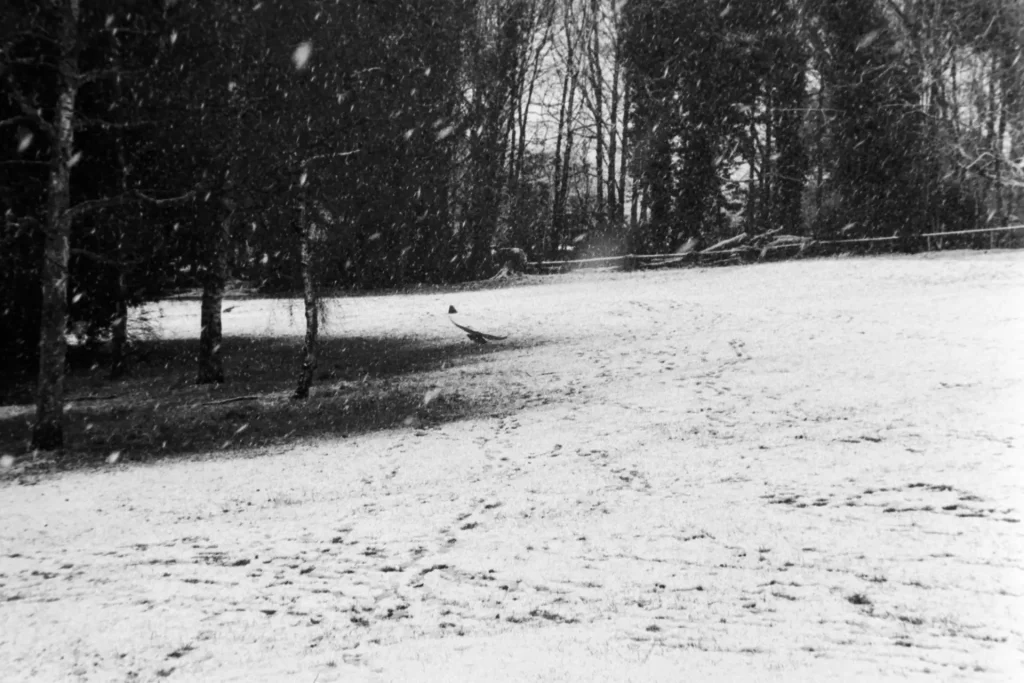
A couple of times towards the end of one of the walks it completely flubbed the exposure, massively overexposing one picture, then overcompensating on the next, very underexposed shots. The image quality isn’t bad, though. The lens is a bit slow (f/4.5 at 38 mm to f/6.4 at 80 mm), which helps it to be reasonably sharp. It’s much more flare resistant than the fairly ancient (at least in design) lenses I’ve been using lately.

I’m not sure whether I’ll be keeping it. I got some nice pictures of people in the snow and a couple of snapshots of my wife that will be nice for memories, but I found the experience a bit lacking. Not knowing for sure whether the exposure is at sensible values, or whether you’ve actually got focus is a bit disappointing. I think this contributed to the run-and-gun approach I ended up using; if you don’t know whether the camera is making the picture as you intended, why take care over it? What I am grateful for is that this camera reminded me how handy (good) automation can be. I’m now thinking of buying an autofocus lens beyond the kit lens for my digital camera, and one day I may start using a film camera with a light meter in it again!
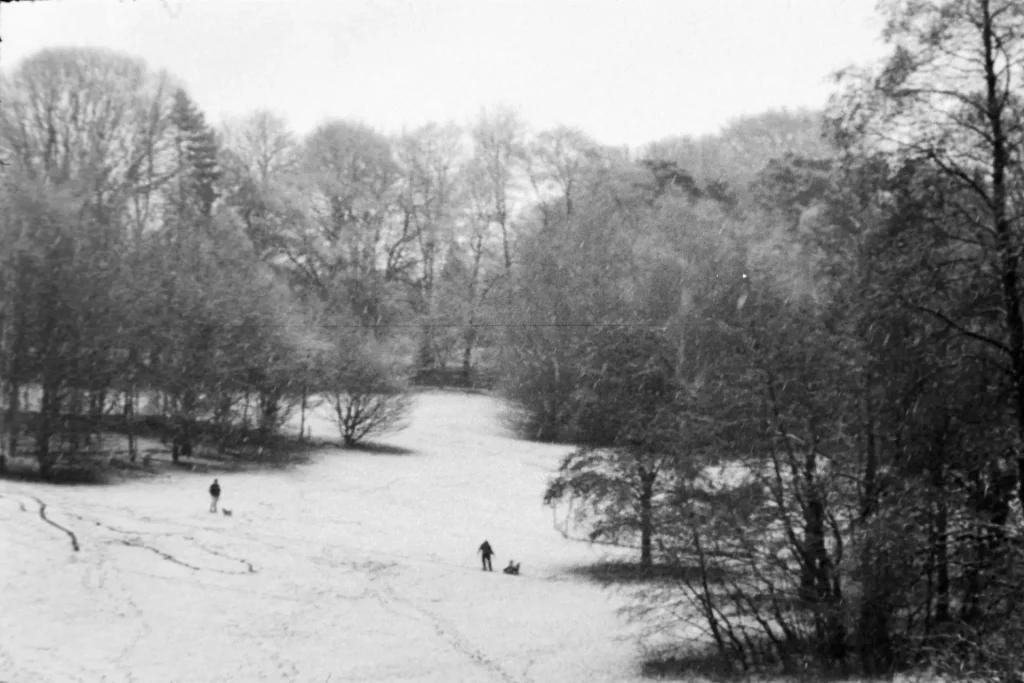
If you like, you can see more of my stuff on instagram
Share this post:
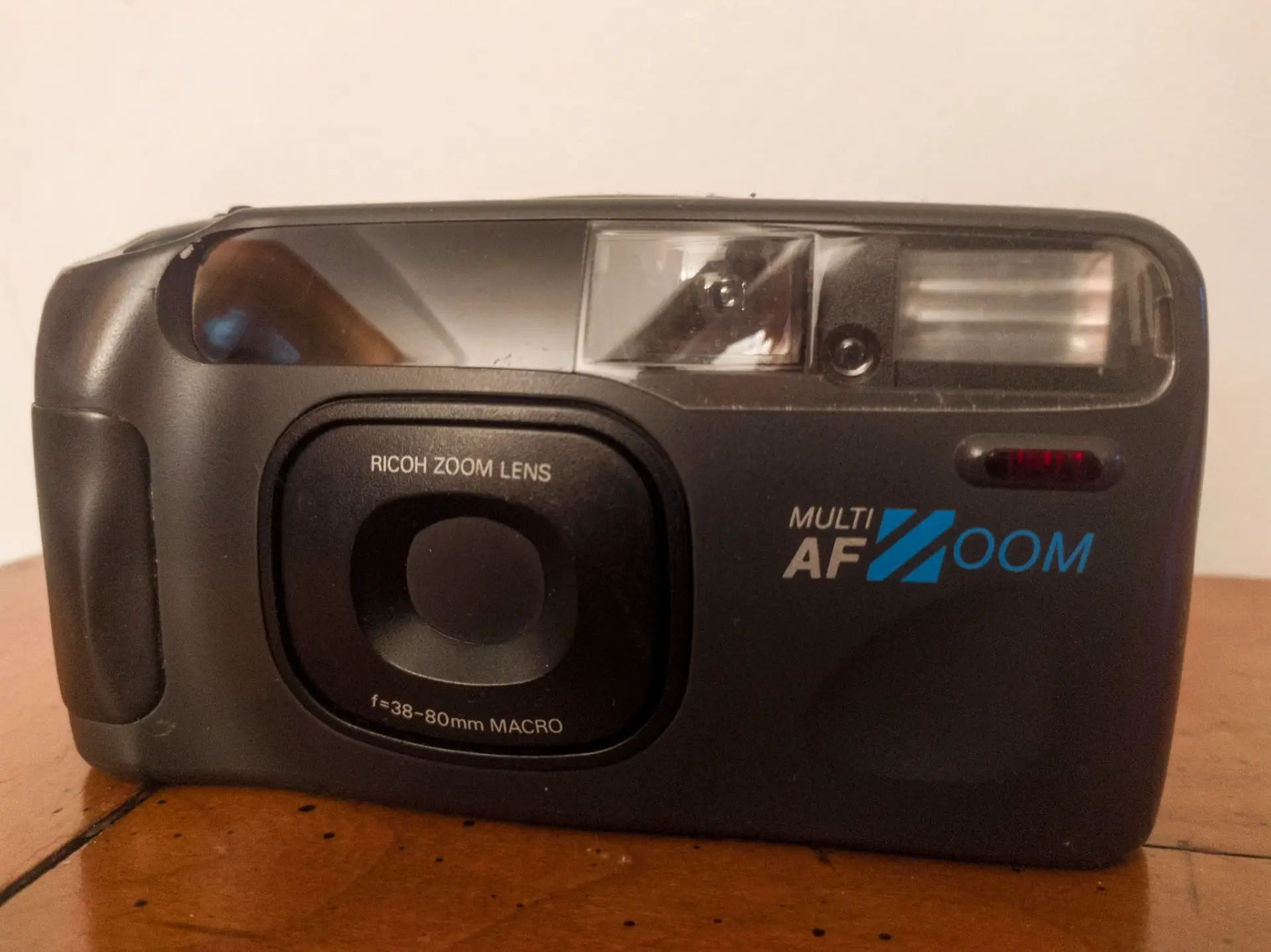








Comments
Dave on 5 frames with a Boots Multi AF Zoom and Ilford HP5+ – By James Mitchell
Comment posted: 15/03/2021
About those Instamatics you have: “Instamatic” is Kodak’s line of 126 cartridge (and 110 cartridge) cameras. 127 film is a 46mm roll film used by the Kodak Brownie and some other compact roll film cameras like the Yashica 44 TLR. Both are obsolete, but remain available from vendors like the Film Photography Project (FilmPhotographyStore.com) .. they also have a 35mm to 126 converter cartridge.
Comment posted: 15/03/2021
David Hill on 5 frames with a Boots Multi AF Zoom and Ilford HP5+ – By James Mitchell
Comment posted: 16/03/2021
Comment posted: 16/03/2021